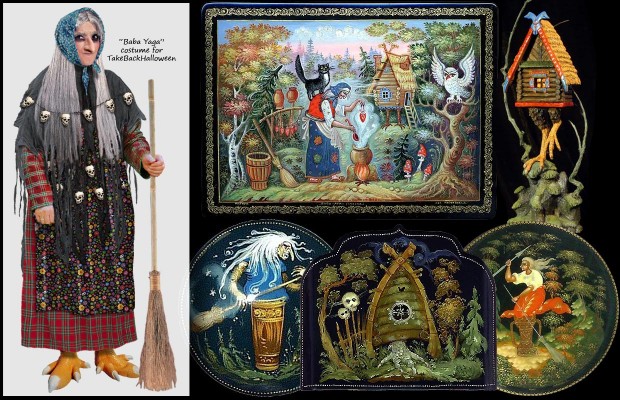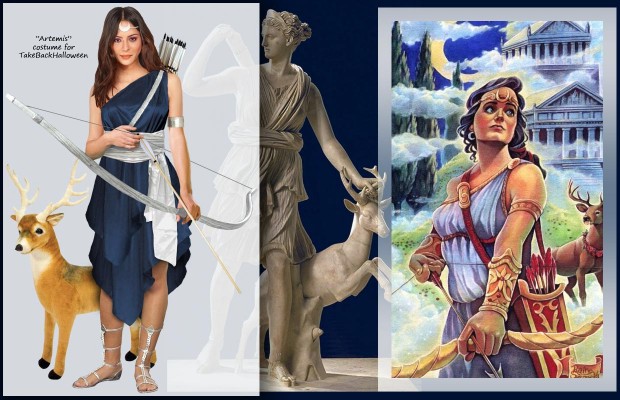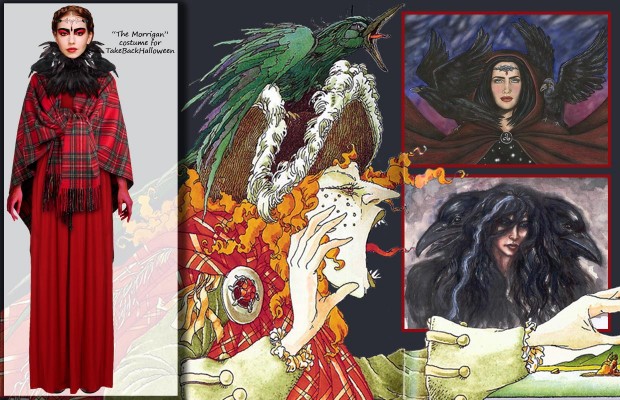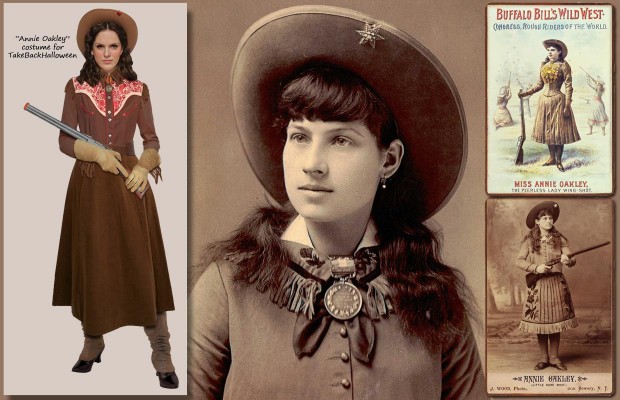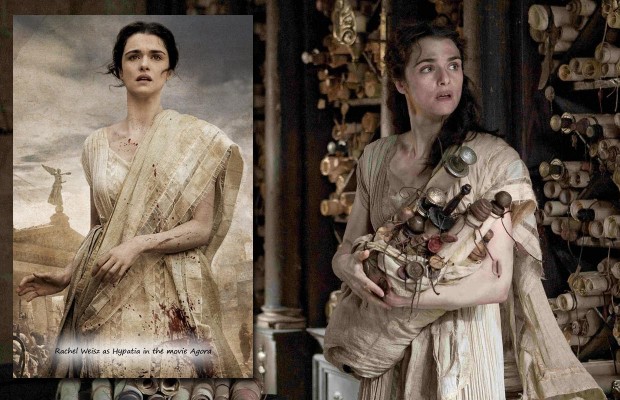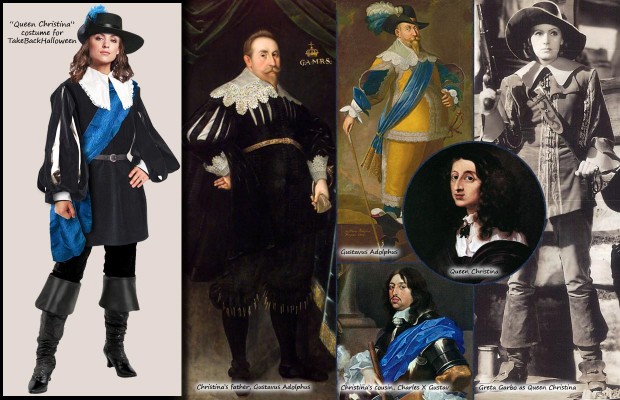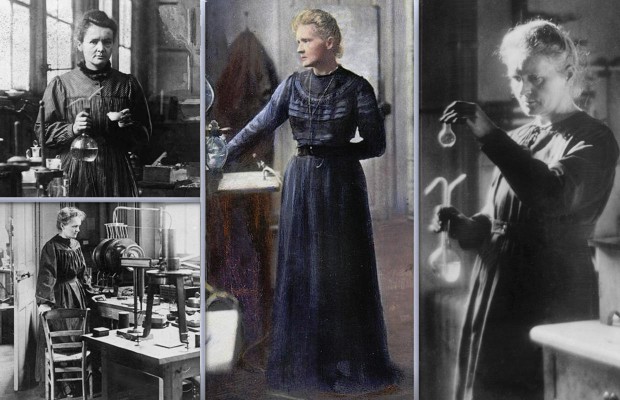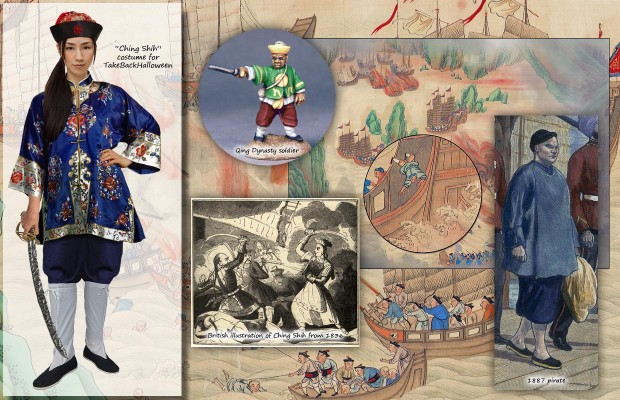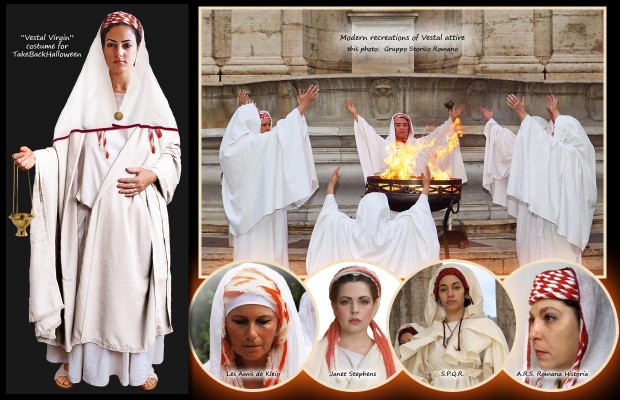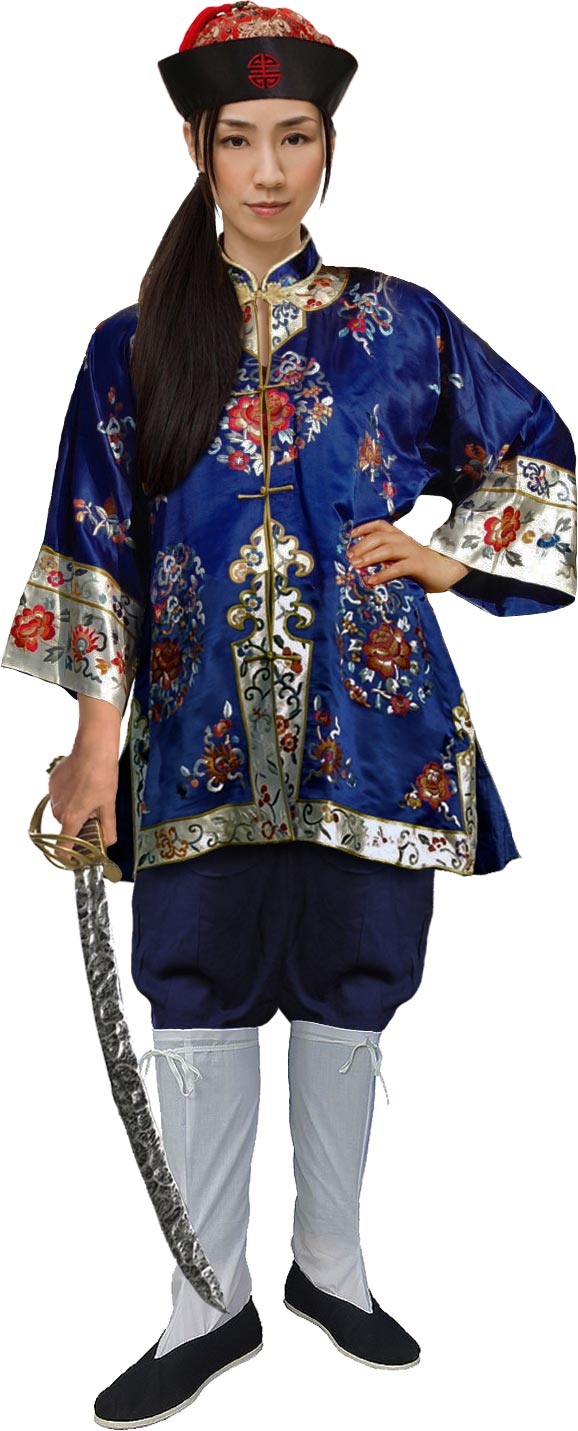For most of the world, the 2013 Halloween season is just starting. For us, the 2013 season has been going on for months, as we designed and published the new costumes funded by our Kickstarter campaign. This week we unveiled the last of the 19 new costumes with Baba Yaga and Hedy Lamarr. Here’s the update I posted to our Kickstarter backers:
Look at what you did
Dear Backers,
This week we published the last of the 19 new costumes for our 2013 season, all of them made possible by YOU. With the terrifying Baba Yaga and the brilliant Hedy Lamarr, the full set of new costumes funded by our 2013 Kickstarter is now complete.
And it’s all thanks to YOU.
Our traffic is currently through the roof, and the new costumes are a huge hit with all the women and girls out there looking for an alternative to the Sexy Toaster school of Halloween costumes.
What makes me really happy is how wide our audience really is. The teenage girls on Tumblr are tearing it up (you should see the mash notes we get), twentysomethings love us, moms love us, and right now there’s a whole conference of professional women in STEM who are using our costumes for an upcoming event.
Here’s the full list of cool/beautiful/weird costumes your support made possible, all published over the past several months:
(click on each picture to go to the costume page on our site)
Thank you so much for your support, participation, and encouragement over this past year. And thank you, as ever, for helping us Take Back Halloween!
Love,
Suzanne
P.S. Look for your September newsletter in the next few days, with announcements about this Halloween and our coming season.
There are no known images of Hypatia (ca. 350-415), the last great pagan philosopher and scientist of the ancient world. That’s not surprising, of course; there are no known images of almost anyone from back then. Fortunately we have the film Agora to use as our visual reference. This dramatization of Hypatia’s life is, like most movies, full of historical inaccuracies, but at least it gives us something to work with.
The real Hypatia was the daughter of Theon, a scholar in Alexandria. She grew up to become an outstanding mathematician, astronomer, and philosopher; indeed it seems she was the leading intellectual figure of her day. She was also politically influential, and her circle of followers included a number of Church bigwigs and government types. (Hypatia herself was a pagan, but she taught Christians and pagans alike.) It was the political angle that eventually led to her death. She became a target in a power struggle between rival factions in Alexandria, and was murdered horribly by a street mob. But her influence lived on: her commentaries on Greek mathematics and astronomy helped ensure that at least some of that knowledge would survive into the medieval period. And the Neoplatonic philosophy that she imparted to her students helped shape the developing Christian doctrine of the Trinity.
The items we suggest, from left to right:
1. Ivory crinkle fabric by the yard to make an Ionic chiton. To make an Ionic chiton (chiton is Greek for tunic) you just need two big rectangles of fabric you can pin together; we give you instructions below on how to do it. Four yards of this ivory crinkle fabric will be sufficient for your two big rectangles, but note that it’s chiffon, so it’s very thin. You might want to do double thickness.
2. Super easy alternative: Flat sheet in cream to make a Doric chiton. If you have a bedsheet, you can make a Doric chiton. It’s a simpler, more archaic style that just involves folding a rectangle of fabric around the body. See the bottom of this page for instructions.
3. Six yards of 36-inch cheesecloth to use as a cloak, either by the yard or by the pack. Why cheesecloth? Because Hypatia didn’t wear a normal cloak; she wore a philosopher’s cloak (Greek tribon), which was a deliberately raggedy kind of garment, coarsely woven and thin. The idea was to indicate one’s indifference to material wealth. Six yards of 36-inch cheesecloth is plenty: just fold it in half for double thickness, and then drape it around you philosophically. You will definitely look indifferent to material wealth. (Unbleached muslin or cotton gauze would also work.)
4. Make your own scrolls with these blank Egyptian papyrus sheets. It’s a myth that Hypatia valiantly defended the Library of Alexandria from a Christian mob. The Library of Alexandria had already ceased to exist a couple of centuries before she was even born. But she certainly spent her life immersed in books, so carrying some papyrus scrolls with you will be perfectly in character. Just roll these sheets up loosely and tie them with cord.
5. Optional: dowel rods and caps. If you’re the crafty type and you want your scrolls to look even more authentic, you can make your own scroll rods with plain wooden dowels and caps. Pick the size dowel and cap that you want, snap them together, stain or paint them, and then glue one edge of your papyrus to the rod and roll it up.
6. Carry your finished scrolls with you in a burlap sack. This one is 18 inches wide by 28 inches long.
Shoes: Simple leather sandals.
How to make an Ionic chiton: The Ionic chiton looks elegant, but it’s basically just two big rectangles of fabric pinned together. You can use bedsheets or wide yardage. The lightweight crinkle fabric we suggest for Hypatia gives a very nice drapery effect. You’ll need a bunch of small safety pins or hem tape to join the two pieces together at the sides, plus additional pins (safety pins or decorative brooches) for the top edge. You’ll also need a cord or belt to cinch your waist.
How to make a Doric chiton: The Doric chiton is simpler and older than the Ionic chiton; it consists of a single rectangle of fabric folded around the body. All you need is a flat sheet, some safety pins, and a belt or cord.
One hundred and seventy-five years ago today, Queen Liliuokalani was born. In honor of the occasion we’re unveiling our new Liliuokalani costume, which is based on the beautiful portraits made of Her Majesty in the 1880s and 90s:
Queen Liliuokalani was a big favorite with our backers and Facebook friends when we ran the survey for new costumes, and we’re delighted to celebrate her memory. She’s a deeply loved figure in Hawaiian history and an inspiring role model for all of us.
Our new Trung Sisters costume, which we published yesterday, has been a long time coming. People have been asking us for a DIY Trung Sisters costume since our very first year of operation. If you grew up in a Viet community, you’re of course familiar with the seamstress-made costumes sometimes worn on Hai Ba Trung Day. But, we were asked, what about something that looks more ancient? What about something that looks like the Dong Son culture, and the pictures in the illustrated history books?
We came up with three basic requirements for the costume:
1. That it look like the ancient Viet style;
2. That it be recognizable as the Trung Sisters;
3. That it be, like all our costumes, easy to put together with no sewing required.
And this is the result:
With the swords, the feathers, and the bright yellow jackets and sashes, everyone will immediately know you’re supposed to be the Trung Sisters. Now all you need to do is wrangle a couple of elephants to ride on…
Beyond the legend: If you’re doing research on ancient Vietnam, or if you’re just a history geek, here are some useful English-language scholarly articles to get you started.
- From Co-loa to the Trung Sisters’ Revolt: Viet-Nam as the Chinese Found It. (pdf download) By Stephen O’Harrow. Published in 1978, this is a key English-language paper.
- Rethinking the Status of Vietnamese Women in Folklore and Oral History. (pdf download) By Nguyen Van Ky. A short paper exploring what can be deduced about ancient gender roles in Vietnam.
- View from the East Mountain: An Examination of the Relationship between the Dong Son and Lake Tien Civilizations in the First Millennium B.C. (pdf download) By John Tessitore. An overview of the Dong Son culture, with only a brief reference to the Trung Sisters.
- Investigating Cultural Evolution Using Phylogenetic Analysis: The Origins and Descent of the Southeast Asian Tradition of Warp Ikat Weaving. (online) By Christopher D. Buckley. This isn’t about the Trung Sisters at all; it’s a fascinating new study about the ancient roots of ikat weaving.
If you understand Vietnamese, the documentary Di tim trang phuc Viet (In Search of Vietnamese Costumes) is a treasure trove. You can watch all 24 episodes on YouTube. Here’s the first one:
Aside from the fact that we have new costumes for both of them this season, which we published this week? They’ve both been the subjects of highly inaccurate movies with really cool costumes. Really cool costumes that we didn’t hesitate to mine for inspiration!
Here’s Christina of Sweden, and notice the still photo of Greta Garbo from the movie Queen Christina:
And here’s our Hypatia costume page, which uses Rachel Weisz from the movie Agora for the model:
But what about the history behind the movies?
For that, you need books. The most recent English language biography of Queen Christina is Veronica Buckley’s Christina, Queen of Sweden: The Restless Life of a European Eccentric. As for Hypatia, the key modern study is Hypatia of Alexandria
by Maria Dzielska. If you want the CliffsNotes version (and an explanation of why the movie Agora is full of wrong), this Armarium Magnum blog post will fix you up.
Check out our new Marie Curie costume page:
And in case you missed it, last week we published Grace Hopper:
Earlier in July we published Rosalind Franklin:
And with that, the original trilogy of great modern scientists we promised in our Kickstarter is complete.
But! Since you all voted for us to add a Hedy Lamarr costume, that trilogy will very soon become a quartet. ETA on Hedy is early next month.
We’ve been publishing our new pirate costumes in chronological order. First we had Grace O’Malley, who ruled the seas in Elizabethan times. Then we had Anne Bonny and Mary Read, who lived during the Golden Age of Piracy in the early 18th century.
And now our pirate trilogy is complete with Ching Shih (1775-1844), the latest and greatest of them all.
Ching Shih was more than a pirate captain; she was a pirate admiral, commanding a vast fleet that was really almost a floating civilization. In the early 19th century her Red Flag Fleet ruled the South China Sea, striking terror into the hearts of citizens and consternation into the hearts of government officials.
The Qing Dynasty tried and failed to defeat Ching Shih, and finally resorted to bribery. In exchange for giving up their thieving ways, Ching Shih and her pirates were granted full pardons and allowed to keep their loot. It was an unusually happy ending.
In addition to being a ruthless pirate, an organizational genius, and an incredibly savvy political player, Ching Shih was also a young mother with toddlers underfoot. It’s mind-boggling to contemplate what this woman’s life was like. She’s definitely on my list of people to visit once we have a working time machine.
There are no contemporary images of Ching Shih, but there is an amazing painted scroll depicting the Chinese campaign against the Red Flag Fleet. The 18-meter scroll is now in the collection of the Hong Kong Maritime Museum, and it’s the background of our main illustration on the costume page.
Today is the birthday of Rosalind Franklin, who would be 93 years old if she were still with us. I’m delighted to see that Google is honoring her with a Doodle:
We’re also celebrating the occasion with our new Rosalind Franklin costume page. (The color coordination with the Google Doodle is sheer coincidence. I hadn’t even seen the Doodle until just now.) Check it out:
Every time we publish a costume it becomes my new favorite. With our double Anne Bonny/Mary Read costume page, I now have two new favorites:
That’s Anne on the left, dressed for shore leave in a combination of stolen finery and sailor slops. Mary on the right is dressed for ship duty—which is to say, her outfit is much closer to what real pirates wore every day.
More people have asked for pirate costumes than anything else, and so we had a number of goals with this. We wanted to ground our outfits in authentic sailor garb of the early 18th century, employing period fabrics like striped ticking and blue-and-white check. We wanted to illustrate the real stuff that pirates wore (shoes and stockings, for example), but still find room for the more fanciful items that Hollywood has led us to expect (cavalry boots). And finally, we wanted to come up with believable but cool costumes that wouldn’t just be clones of the Johnny Depp look.
Pirates wore a combination of standard-issue sailor slops, plundered loot, stuff they’d sewn themselves, and rags. We provide resource links for all the items in the outfits, but in true pirate spirit we encourage you to use as much scavenged stuff as possible. Old leather belts are great, the more rugged the better. You can transform a man’s modern shirt into something more 18th centuryish by trimming the points off the collar or removing the collar entirely. Capri pants can work as sailor’s breeches, or you can cut the bottoms off a pair of old pants so they’re calf length. Be creative and resourceful. Just like a pirate!
Check it out: Anne Bonny and Mary Read.
July 2 is unofficial Amelia Earhart Day in the news every year, since it was on that day in 1937 that she and navigator Fred Noonan disappeared forever. TIGHAR is usually out on Nikumaroro Island this time of year, finding shoes or scrap metal or freckle cream jars. Did Amelia really end her days on Nikumaroro? I don’t know, but it’s a grim thought. From what I’ve read it’s a hellish place: no water, not much shelter, and a swarming population of coconut crabs the size of bobcats.
At any rate, in honor of Amelia we’ve picked today to publish our new Amelia Earhart costume. It’s suitable for Halloween or anytime you feel like dressing up as the most famous aviator in history:
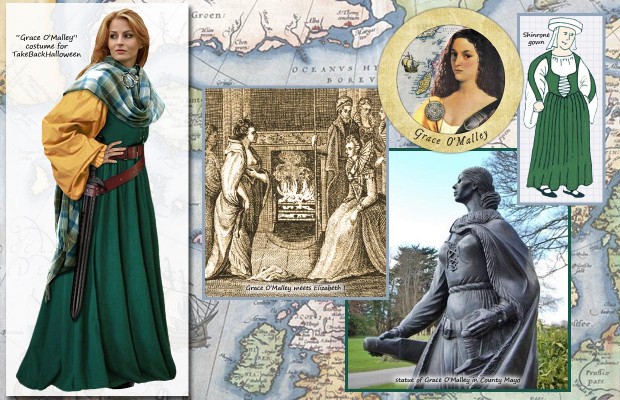
UPDATE: Okay, you’ve convinced me. Here, on Facebook, by email—everyone thinks Grace should be a queen. So we’re switching her over.
****
I was just about to publish our new costume design for Grace O’Malley (above), when I realized I wasn’t sure what category to put her in. Although I refer to her in the text as a queen by her own lights, my instinct is to list her in the Notable Women category. That’s where she is for now. But was she a queen?
Obviously Grace wasn’t the enthroned queen of a state, like Victoria or Hatshepsut or Wu Zetian. She was a clan chieftain and local strongwoman, with castles along the coast in County Mayo and ships patrolling the waters. References to her as the “Queen of Clew Bay” or “Queen of the Umaill” rely on the traditional Irish usage of the word “king” for all manner of rulers, including local petty chiefs. It’s not at all the kind of kingship or queenship that we associate with state-level formal power.
But looking over the women who are already in our Queens category, it’s a mixed bunch. Despite being referred to as queens in the historical record, in reality many of them were just local and tribal chiefs. Boudicca was the queen of the Iceni, a tribe in southeast Britain. Tomyris was the queen of the Massagetae, a nomadic confederation in Central Asia. Lady Six Monkey probably ruled over a single city. The mysterious and semi-legendary Tin Hinan may not have ruled over anything at all.
What do you think? Should we leave Grace O’Malley in the Notable Women category or move her to Queens? If you were looking for a Grace O’Malley costume, where would you expect to find it?
 Thanks to the wonderful Kickstarter backer who commissioned this costume, the dream can be yours. The Vestal Virgin is the second Special Request costume from our Kickstarter campaign (the first was Lasiren). The very generous sponsor of this costume prefers to remain anonymous, but thank you!
Thanks to the wonderful Kickstarter backer who commissioned this costume, the dream can be yours. The Vestal Virgin is the second Special Request costume from our Kickstarter campaign (the first was Lasiren). The very generous sponsor of this costume prefers to remain anonymous, but thank you!
The great thing about this costume is that it’s so easy and versatile. We give you instructions on how to make it authentic, but all you really need to pull off the basic look are a few white bedsheets and some red and white yarn. You can see from the pictures we include on the costume page that modern reenactors in Italy all have their own way of interpreting Vestal attire, so you don’t have to get too hung up on the details. The four basic elements of the costume are:
- A chiton or tunic, which you can pin together from white bedsheets;
- Another white bedsheet wrapped around you as a shawl (the palla);
- A rectangle of white cloth draped over your head as a veil (don’t bother adding a red border if you’re in a hurry);
- Thick red and white yarn braided together and wrapped around your head.
And voilà! You’re a Vestal Virgin.
Of course, if you do want to get hung up on the details, we’ve tried to supply enough guidance for you to put together a reasonably authentic look. You’ll be able to officiate at your local Vestalia celebration with confidence.

